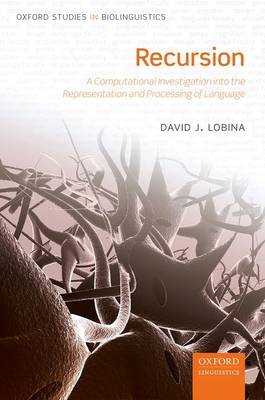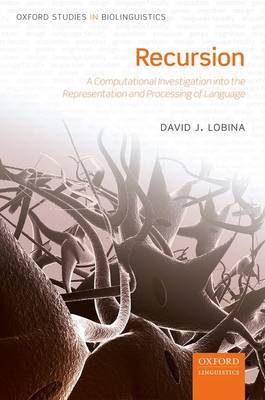
- Afhalen na 1 uur in een winkel met voorraad
- Gratis thuislevering in België vanaf € 30
- Ruim aanbod met 7 miljoen producten
- Afhalen na 1 uur in een winkel met voorraad
- Gratis thuislevering in België vanaf € 30
- Ruim aanbod met 7 miljoen producten
Zoeken
Recursion
A Computational Investigation Into the Representation and Processing of Language
David J Lobina
€ 126,95
+ 253 punten
Omschrijving
This book provides a comprehensive account of the role of recursion in language in two distinct but interconnected ways. First, David J. Lobina examines how recursion applies at different levels within a full description of natural language. Specifically, he identifies and evaluates recursion as: a) a central property of the computational system underlying the faculty of language; b) a possible feature of the derivations yielded by this computational system; c) a global characteristic of the structures generated by the language faculty; and d) a probable factor in the parsing operations employed during the processing of recursive structures. Second, the volume orders these different levels into a tripartite explanatory framework. According to this framework, the investigation of any particular cognitive domain must begin by first outlining what sort of mechanical procedure underlies the relevant capacity (including what sort of structures it generates). Only then, the author
argues, can we properly investigate its implementation, both at the level of abstract computations typical of competence-level analyses, and at the level of the real-time processing of behaviour.
argues, can we properly investigate its implementation, both at the level of abstract computations typical of competence-level analyses, and at the level of the real-time processing of behaviour.
Specificaties
Betrokkenen
- Auteur(s):
- Uitgeverij:
Inhoud
- Aantal bladzijden:
- 288
- Taal:
- Engels
- Reeks:
Eigenschappen
- Productcode (EAN):
- 9780198785156
- Verschijningsdatum:
- 3/10/2017
- Uitvoering:
- Hardcover
- Formaat:
- Genaaid
- Afmetingen:
- 234 mm x 152 mm
- Gewicht:
- 539 g

Alleen bij Standaard Boekhandel
+ 253 punten op je klantenkaart van Standaard Boekhandel
Beoordelingen
We publiceren alleen reviews die voldoen aan de voorwaarden voor reviews. Bekijk onze voorwaarden voor reviews.











